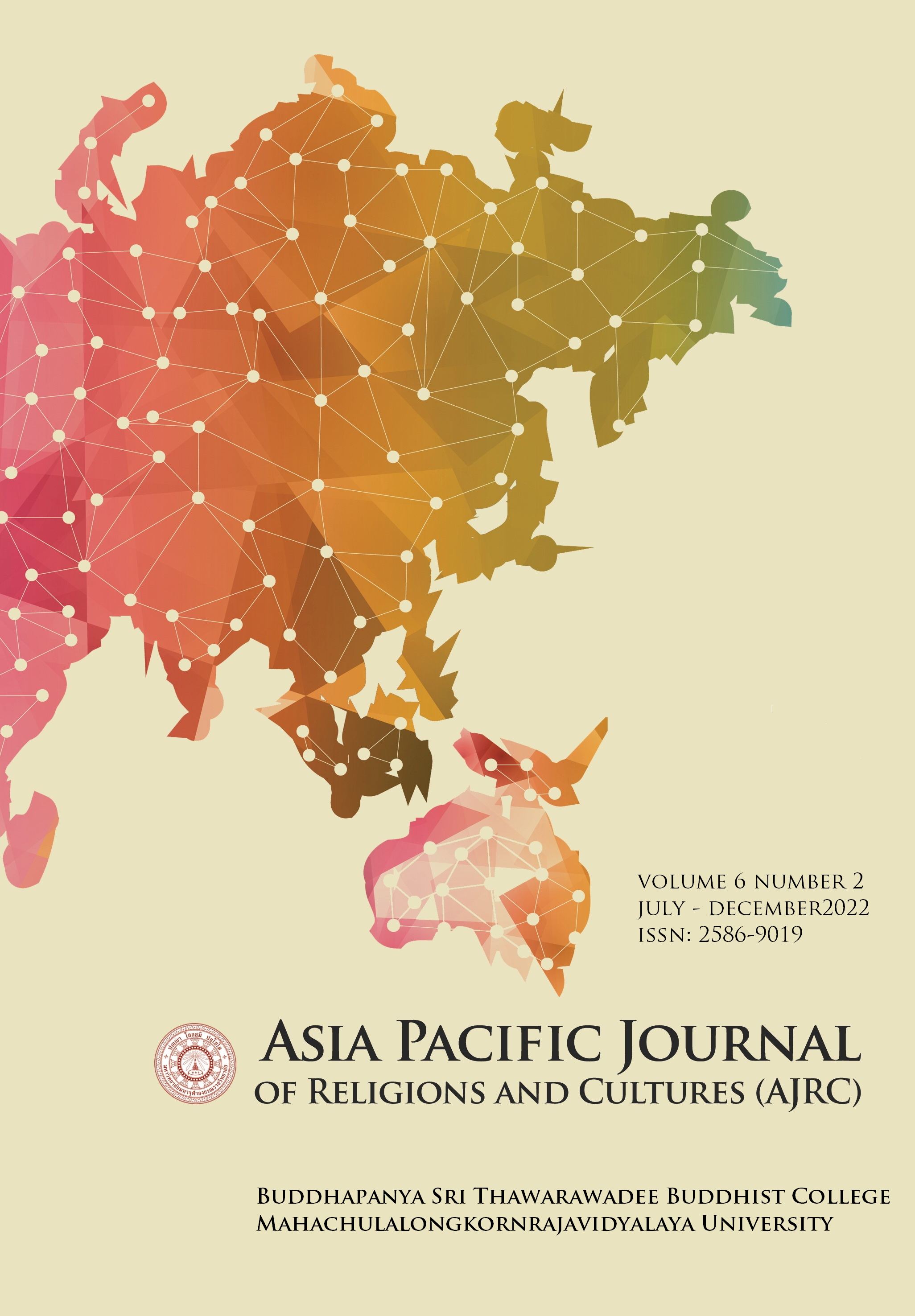THE DONG IN MINE GUIDEBOOK BY FIELD WORK AT SCHOOL OF MUSIC AND DANCE, NANNING NORMAL UNIVERSITY
Main Article Content
Abstract
Dong folk songs are a world intangible cultural heritage of inheriting and developing national music culture. This research paper aims to write Dong in Mine: the school-based guidebooks by way of field study. It is qualitative research that uses documentation data with field studies of 3 villages and 5 experts, to design and verify, draft content of Dong in Mine guidebooks and lesson plans and operate during the year 2020-2021.
The results revealed that the Dong in Mine guidebooks consisted of 11 chapters: 1) geographical and cultural background of the generation of Dong 2) Dong Dage in history 3) transmission areas and inheritance 4) the relationship 5) musical structure 6) Lyric-song, 7) the expressions of lining words 8) The Lining cavity 9) Artistic characteristics and thinking 10) cultural-ecological circle formed and 11) The new model. To teach for 17 weeks. This is in accordance with the recommendations of experts and will be tested and improved in the distant future so that teachers and students can have confidence in the content, materials and methods of teaching in the future.
Article Details

This work is licensed under a Creative Commons Attribution-NonCommercial-NoDerivatives 4.0 International License.
References
China Statistics Press. (2012). State Council Population Census Office, Department of
Population and Employment Statistics, and National Bureau of Statistics.
China's 2010 Population Census Data (upper, middle and lower).
China Statistical Yearbook-2021. (2021). China Statistical Yearbook.
reference date 2021-11-15.
Delgado. K. (2012). Music 612 Ethnomusicology Fieldwork Theory and Method.
Dong people. (2021). The Central People's Government of the People's Republic of China
website reference date 2021-02-22.
Fan Zuyin. (1994). Introduction to Chinese Multi-voice Folk Songs. Beijing: China Music
Publishing House.
Nigel G. Yoccoz, Keisuke Nakata, Nils Chr Stenseth and Takashi Saitoh. (1998).
The demography of Clethrionomys rufocanus. From mathematical and
statistical models to further field studies.
Li, Xuemei; Smith, and Kendra, Schank. (2011). Society of Architectural Historians.
Journal of the Society of Architectural Historians; Berkeley. Vol. 70, (1), 7-17.
Liu Kuili, (2007). Intangible Cultural Heritage Eternal charm stems from mellow connotations. Frontline. (02). https://www.doc88.com/p-18947082181631.html?r=1
Wu Guodong. (1997). Introduction to Ethnomusicology. Beijing: People's Music Publishing House.
Wu Hao and Zhang Zezhong. (1991). "Research on dong folk songs", Guangxi People's
Publishing House, p30.
Yang Fanggang. (2001). Cultural Genes and Social Conditions: A Theory of the Causes of
The Great Songs of the Dong People. Journal of Guizhou University for
Nationalities (Philosophy and Social Sciences Edition), 01.
Yang Xiao, (2009). The Great Song of the Dong Nationality, Zhejiang People's Publishing House, P61-63.
Zhang Yong. (2010). "The History of Dong Music: An Introduction", in Exploration of
Dong Art Garden, Guizhou Nationalities Publishing House. p. 222.
Zhang Zhongxiao. (2001). Differences and Causes: A Comparative Study of Musical Culture
in the Northern and Southern Dialect Areas of the Dong Ethnic Group. Journal of
Guizhou University (Art Edition).


